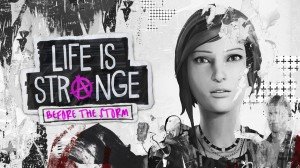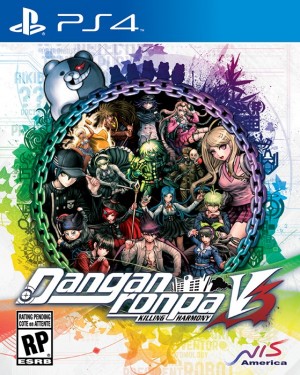Review for Life Is Strange: Before the Storm page 2
Note: Since time of writing, this game has been remastered and re-released on Feb 1, 2022 with updated character models, improved motion capture and more, including a bonus episode, "Farewell." This review deals only with the original version of the game.
Life Is Strange is one of my favorite games in recent memory. Developed by French studio Dontnod and published by Square Enix, the five-episode series with a YA (young adult) slant is primarily the story of friendship between two teen girls, quiet Max Caufield and brash, emotionally-battered Chloe Price, set against the backdrop of an elite private school in the Pacific Northwest. I was far from alone in my appreciation for this sleeper hit: three years after its debut, the game has exceeded three million copies sold with a sequel in the works.
In spite of my fondness for the series—or maybe because of it—I had misgivings when Square Enix announced that a three-part miniseries was also under development, this time with fan favorite Chloe as the protagonist. Made by an entirely different studio, Colorado-based Deck Nine, Life Is Strange: Before the Storm promised to tell the origin story of Chloe and her best friend Rachel Amber, whose mysterious disappearance was one of the original story’s central mysteries. As eager as I am to see female friendships represented in video games, the surprise prequel seemed like an attempt to quickly cash in on the series’ popularity. I sincerely hoped I would be proven wrong.
From Before the Storm’s opening scene, there’s no question that you’re playing a Life Is Strange game. The controls are the same, allowing you to freely navigate with either the keyboard/mouse or a gamepad. As you approach interactive objects, the active hotspot (usually the one you’re facing or standing closest to) is identified by a white outline, with the display showing which keys or buttons you need to push. In an added feature, you can see your current objective by looking at the palm of Chloe’s hand, where she has it written down. This is a clever and true-to-life touch for a teenager, but in a game with a fairly linear route and no puzzles to get stuck on, I rarely needed to use it.
The prequel’s aesthetic is at the same high level as its predecessor, with stylish graphics, fluid and realistic character animation, and artistic camera angles and lighting that make almost every frame look like a carefully composed screenshot. The choices you make—some major, some minor—are again listed at the end of each episode, with headings that may tip you off to optional content worthy of a replay. Three save slots give you the opportunity to try out different story paths, but this isn’t immediately obvious from the main menu (you’ll find them in Settings). Like Max in the first game, Chloe carries a journal that you can refer to for backstory, as well as a cell phone where text messages to and from other characters shed light on their relationships and Chloe’s frame of mind. In two small but nevertheless fun additions, Chloe can draw graffiti in certain areas (similar to Max’s ability to snap photos) and she can change outfits near the beginning of each episode. All of the voice actors for recurring characters have been recast, but I honestly didn’t notice. Rhianna DeVries does a great job as Chloe.
Because Before the Storm is also set in the small town of Arcadia Bay, several locations and characters are familiar. Such asset reuse is common in episodic games, but even the recycled locations bring something new. This game is set more than three years before the events of Life Is Strange and two years after the death of Chloe’s father, whose absence is highlighted by dark squares on the walls where his pictures used to hang. Meanwhile, Chloe’s room (free of graffiti) and the garage (not yet cluttered up with her stepfather-to-be’s things) emphasize the backward passage of time. Walking around the Blackwell school grounds reveals younger versions of characters we’ve met before, while Chloe’s interaction with her classmates shows how poorly she fits in. Chloe’s hair is brown instead of blue. Drug dealer Frank’s pitbull mix, Pompidou, is a rambunctious little puppy. And an incredibly powerful scene in the junkyard, which Chloe will later describe to Max as a place special to her and Rachel, gives the location new meaning that changed my perspective on certain scenes in the first game. There are also new locations to explore, such as an abandoned mill where Chloe attends a punk rock concert, a lush state park that provides a powerfully scenic backdrop to Chloe and Rachel’s developing friendship, new corners of the Blackwell campus, and Rachel Amber’s fancy Craftsman-style house.
For all their similarities, the two games do have a significant difference. Life Is Strange had two distinct narrative threads: a supernatural plot, in which Max discovers she has the power to rewind time, and the true-to-life story involving her friendship with Chloe. Before the Storm lacks the supernatural slant and time-rewind mechanic, focusing solely on Chloe and Rachel’s friendship. I grew weary of the time gimmick pretty quickly, so this is no big loss in my opinion, but people who enjoyed it may be disappointed by the prequel’s quieter premise. The gameplay is more streamlined without the time-related puzzles, leaving only the story and a few lite dialogue and inventory puzzles that, due to how easy they are, tend not to get in the way of narrative progress.
Even without the supernatural subplot, though, Before the Storm has some hints of the surreality and symbolism that were central to its predecessor, including playable recurring dreams involving Chloe’s dead father, a significant weather event that foreshadows elements of the upcoming story, and the titular storm itself. This storm is a double entendre, referring both to the tornado we know is coming and to The Tempest, the Shakespeare play put on at Blackwell during the game in which Rachel is (of course) the star.
Max’s time-rewind gift is sort of replaced by Chloe’s “backtalk” ability, with which you’re supposed to “use arguments and insults to get someone to do what you want” according to an on-screen prompt. The backtalk option appears during certain conversations, with a #!@ icon indicating that it’s time for Chloe to run her mouth. In these sequences you’re expected to pick up verbal clues in the other character’s lines in order to craft the best comeback, but rather than sounding like clever wordplay, such exchanges are stilted and forced, portraying Chloe more as a bratty adolescent than the smooth talker she’s supposed to be. You can skip most of these word battles simply by choosing a different dialogue option when the backtalk icon appears, but be aware that the story may branch off differently if you decide not to engage.
While my reaction to the first episode was positive overall, I did notice it trying very hard to assert itself as a prequel. As characters from the previous game are introduced, the writers go out of their way to remind you what the first game already established. (In case you forgot: David’s a war vet and Chloe hates that he’s dating her mom! Nathan’s a rich poser who no one at school likes! Frank’s a sketchy drug dealer!) Even for series newcomers, rather than having these points emerge naturally in the context of a new story, Chloe spends the first part of episode one bouncing from one familiar face to the next with dialogue that self-consciously emphasizes details that are either already quite obvious or not all that relevant to the new narrative.
The pace picks up when attention shifts to Chloe and Rachel. After a harrowing encounter at the concert at the Mill, the girls ditch school together and start getting to know each other. At points the friendship’s early development is sweet, such as when Chloe takes out her phone to listen to music and offers Rachel one of her earbuds (a choice 98% of players had opted for, the first time I played it); at other points it’s teen-appropriately dramatic, such as when Rachel’s mood goes dark and she pushes Chloe away for no apparent reason. I enjoyed the second half of the episode, which culminates in a strong closing that seems to raise the stakes on the girls’ relationship and had me excited to see what would happen next.
Unfortunately, the full experience ended up reinforcing my earlier misgivings. In fact, many of my complaints directly relate to Before the Storm being a prequel and the constraints this puts on the storytelling. This game has the challenge of starting a story with its ultimate ending revealed. (No spoilers; if you’ve played LIS you know what I’m talking about.) And because the writers already know that Chloe and Rachel will go on to have an intense friendship, they seem to assume that the girls can just fall into that relationship without having to work for it.
Take how they meet, for example. Chloe knows that Rachel is the most popular girl in school, but before the game starts they’ve never spoken. (Even that seems contrived in a school as small as Blackwell, but okay.) The first time we see Rachel, she’s bursting into an isolated area of a concert venue to save Chloe from two skeevy guys who are picking a fight with her. The second time, she bursts out of the school to drag Chloe into her Tempest rehearsal for no real reason. Then she tells Chloe they’re skipping school together. (Tells, not asks.) Before long, Rachel has already uttered her iconic line (“Don’t be surprised if one day I’m just out of here”) and they’re vowing to run away together, even though they barely even know each other. They’ve only been hanging out a day!
It’s as if Rachel and Chloe, along with the writers, are aware that they’re destined for this great bond—a presumption that makes the evolution of the friendship less authentic and, frankly, less interesting. In YA, much of the fun in an “opposites attract” story is seeing how two unlikely companions find common ground, but Before the Storm skips right over this. From the moment Chloe and Rachel meet, there’s no question that they’ll become besties, and none of what happens in the game threatens or even rattles their cosmic connection in the slightest. Instead, most of the conflict comes from contrived, over-the-top scenarios outside of their friendship, including a violent drug dealer subplot, a student who goes from normal to nuts in the blink of an eye, and a highly melodramatic plot twist that comes out of nowhere at the end of episode two to hijack the rest of the story.
What’s wrong with this? you may be asking. If it’s destined, then why shouldn’t they be best friends from the minute they meet? Because that’s boring. In a meaty character-driven story, conflict arises out of the protagonists’ struggle to get what they want—in this case, the girls’ friendship. With that in mind, the fact that we know how it ends could have been used to make this story a lot more compelling. Imagine, knowing how intense their bond will be three years later, if Rachel and Chloe hated each other on sight. Imagine if, after a few false starts, they finally started to build a fragile friendship only to end an episode with a massive, no-holds-barred fight, the type you wouldn’t expect them to recover from. Scenarios like these would create conflict relevant to the story, meaningful to the characters, and exciting for players who now get to resolve the issues standing in the way of the friendship so the protagonists can achieve their goal. That’s what I wanted out of Before the Storm—not a presupposed friendship with a soap opera on the side.
I also didn’t like how Before the Storm tried to force a new version of Chloe on me, one who didn’t mesh with the character I’d grown to know in Life Is Strange. In that game you had the option to pursue flirtation and a few kisses with Max. I didn’t—I saw Chloe and Max’s friendship as purely platonic. Teen girl friendships can have incredible intimacy even with no hint of sex or romance, and that’s how I envisioned Chloe and Max’s relationship, as well as Chloe and Rachel’s. Before the Storm’s writers had a different idea. From the get-go, a romantic thread runs through Chloe and Rachel’s interactions even if you make the platonic choices. Now, I love seeing LGBT characters represented in games—that’s not my complaint. But in a prequel to a game that strongly resonated with me because of how close I felt to the characters, whose story I helped shape, the romance between Chloe and Rachel disregards what I believe to be true about their bond. If this weren’t a choice-driven game, I probably would have been more willing to embrace the imposed spin on their friendship. But because choice is such a big part of these experiences, having one particular version of Chloe foisted on me when I know she isn’t the only version of Chloe out there makes me feel like my choices have been ignored.
There are also several distracting inconsistencies between the two games. Before the Storm takes place in the spring of 2010, which would mean a freshman at Blackwell will have already graduated by the time Life Is Strange happens in October 2013. Yet characters like Victoria, Nathan, and a few others from the original game are here, and supposedly already sophomores. I frequently caught myself doing mental math to try to work out a character’s age or grade, only to discover that the years didn’t match up. This may seem like a nitpick, but considering how much the game relies on other elements of Life Is Strange, such continuity errors felt sloppy and took me out of the narrative.
Before the Storm’s biggest problems can’t be blamed on it being a prequel, however. At points the story is simply unbelievable, dull, and just plain bad. I had some quibbles with Life Is Strange’s story as well—especially the melodramatic reveal of the villain near the end—but I was so captivated by Max and Chloe’s relationship that I was willing to forgive certain narrative missteps. This time around, there was nothing to distract me. From unrealistic behavior of school faculty and Rachel’s doting parents to implausible and illogical plot twists, from a ridiculously long Tempest sequence that does nothing to move the story forward to a rushed and wholly unrealistic ending, I’m sad to say I enjoyed very little of this 12ish hour experience. I’m trying to avoid spoilers, but Rachel’s consequence-free participation in the play in light of her meeting with Principal Wells, Chloe’s escapade in the district attorney’s personal study, and episode three’s climactic scenes at the Mill are some of what I’m talking about—convoluted setups that don’t make rational sense and seem to exist in total isolation, with no fallout or even acknowledgement in later scenes.
And then there’s the violence. The third episode in particular has multiple instances of men beating up on women, as well as men beating up on each other to protect women. Frankly, it’s disappointing to see what was implied to be a female empowerment story fall into such stereotypical territory, and it’s especially disturbing since this is a game teenage girls will (rightfully) gravitate to. Violence like that—men dominating women, men slapping women around—is so prevalent in today’s pop culture that it’s easy to go numb to it, but in this game, this story of friendship, I kept asking myself why. Why does a story about two best girl friends, that’s supposed to lay groundwork for the scope of Chloe’s loss in Life Is Strange, have to involve men dominating women? What does that say about “strong” female characters? What does it teach teen girls who are excited to finally play a game about them?
To be fair, I was equally put off by some very disturbing scenes near the end of Life Is Strange, but I chalked those up to a bad narrative decision in an otherwise good game. After playing Before the Storm, I see the violence in Life Is Strange in a new light. It almost feels like being taken advantage of—these are supposed to be games with stories and characters girls will see themselves in, when in fact they’re subtly, maybe even subconsciously, glorifying the victimization of young women. The specific moment in Before the Storm that made me feel this way is at the very end, after the credits—an incongruous moment that directly references the most disturbing aspect of the original game while contributing nothing of value to Chloe and Rachel’s tale. It left me feeling manipulated and frankly disgusted with the writers for thinking that was the right way for this story to end.
All of these narrative problems left me frustrated and disappointed to the point that I just can’t recommend Before the Storm without significant caveats. Technically and aesthetically, it’s a well put-together game, but players eager to return to Arcadia Bay should do so only if you think the story issues I’ve laid out won’t bother you. The “major” choices don’t have the weight of the first game, while the gameplay is either ridiculous due to the absurdity of the surrounding story, or just plain boring. This is not the sequel—or the prequel—that Life Is Strange fans deserve. If only I had the power to rewind time, I would have warned myself to skip it.



_capsule_fog__medium.png)

























